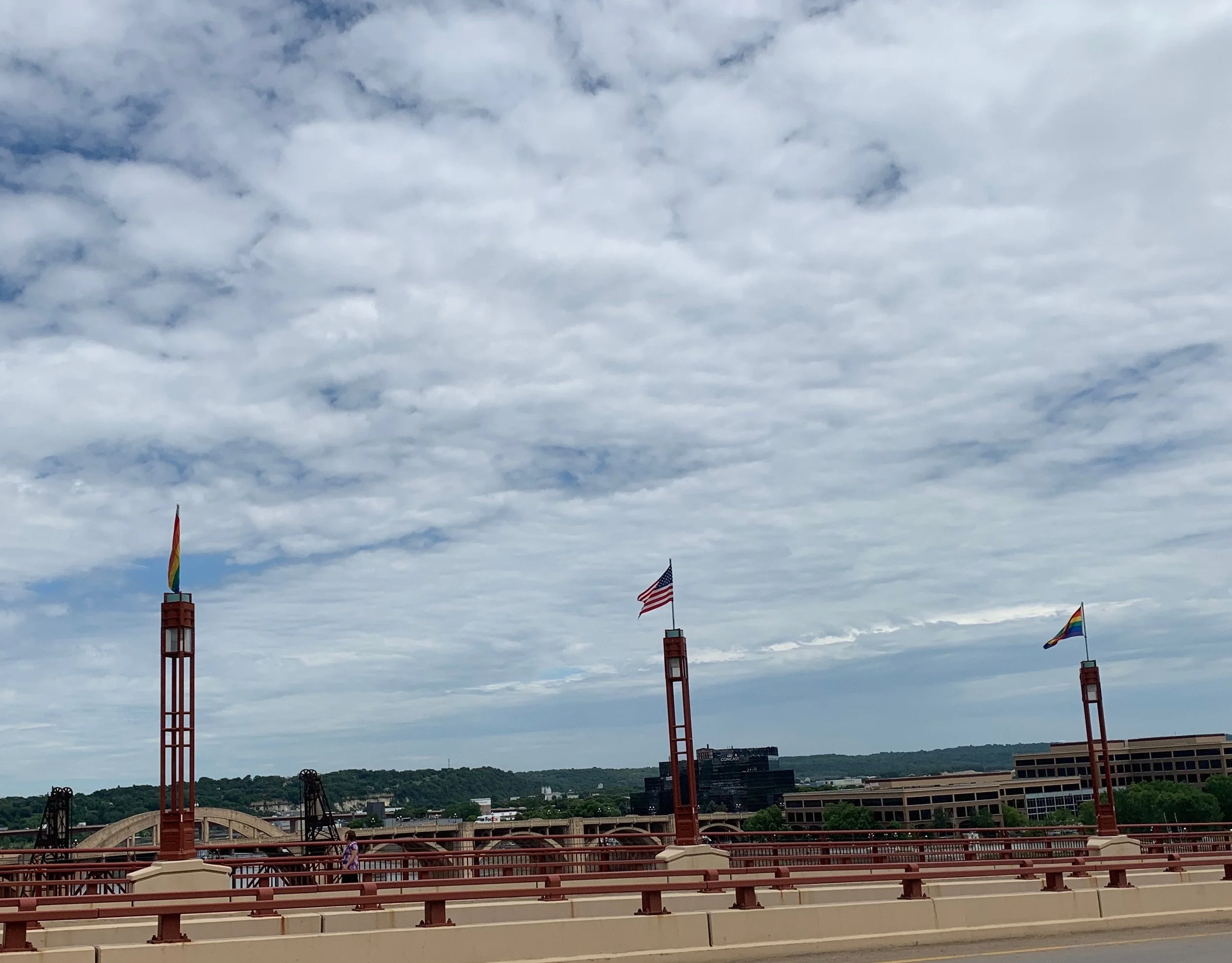I spent this week at the American Association on Intellectual and Developmental Disabilities (AAIDD) national conference in St. Paul, Minnesota. It was (as always) a wonderful time to connect with colleagues who inspire me, be filled with joy upon seeing one of my many talented students present our work, and also recharge my drive to return to my work to address health equity among adults with intellectual and developmental disabilities (IDD).
The image attached to this blog post is the Wabasha Bridge which is flying both the American flag and the rainbow flag to celebrate the diversity and strength of the LGBTQIA community during Pride Month. As I walked across the bridge one afternoon, I was struck by the timing of this conference during Pride Month—we continue to make progress towards equality and access for diverse populations, including people with IDD—yet being at this conference reminds me again of how far we still need to go.
Social justice is defined as the way in which human rights are manifested in the everyday lives of people at every level of society. Often we see social justice considered when discussing disparities based on gender, race, ethnicity, or socioeconomic status-but not often enough based on disability status. Here are just a couple of presentations I wanted to highlight that continue the dialogue around social justice for people with IDD.
During a pre-conference event hosted by the Student and Early Career Professional’s Interest Network, Carrie Eichelberger from University of Utah shared her work on defining and measuring inclusion among students with severe disabilities. She opened her talk with this idea-- you can be physically present in a room with other people and still feel alone. So by just placing youth with severe disabilities in a room with youth without disabilities, doesn’t mean that they are truly included in the energy and connection of that physical space. Social-connectedness is necessary for quality of life and we still have so much work to do to sort out how to make all individuals, regardless of disability status, feel included and connected.
Elizabeth Schiltz, JD from the University of St. Thomas gave a talk entitled: The Delicate Balance Between Independence and Belonging: Flexibility in Housing Options for People with IDD. There has been great progress in closing institutions where people with IDD were housed and isolated from their surrounding community. Today we have policies in place which ensure that individuals with IDD (who require day to day living supports) have living options which are home and community based. This means that instead of living with hundreds of people in an institution, people with IDD now live in small group home settings, with family or on their own. The goal here is that people with IDD can choose with whom and where they live. However, her talk highlighted that there might not be truly be choice, as these group home settings have rules in place pre-defining what makes a home or whom can live there. With our evolving definitions of what makes a home or who you define as family—people with IDD in America are having these core concepts of home and family defined for them and not necessarily by them.
These are just two examples of social injustices people with IDD face daily. The AAIDD conference had hundreds of presentations on issues related to health, employment, sexuality, parenthood, education, and quality of life for people with IDD. All of which pointed to challenges and potential solutions. This conference reminded me (as it does every year) how grateful I am for the opportunity to work as an advocate alongside people with IDD to address social justice issues.


